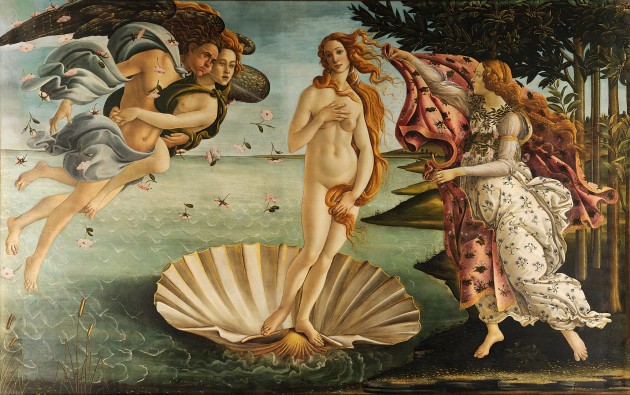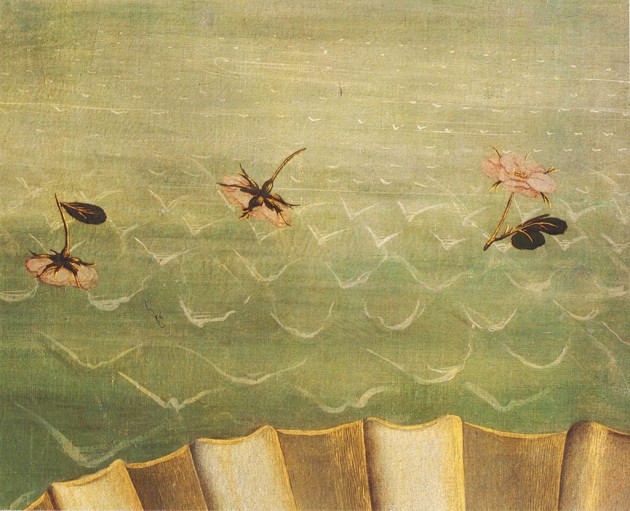Saturday, May 2nd, 2020
“Birth of Venus”: Celestial and Earthly Elements

Botticelli, “Birth of Venus,” ca. 1484-86. Tempera on canvas. 172.5 cm × 278.9 cm (67.9 in × 109.6 in). Uffizi, Florence (image via Wikipedia)
When I teach introductory classes with Botticelli’s Birth of Venus, we typically explore how Botticelli is interested in stylistic features like naturalism and idealism. To explore these two styles, I usually highlight the figure of Venus. Then we talk about why Botticelli is categorized as an Early Renaissance artist, despite that he worked in the late 15th century and was a contemporary of Leonardo da Vinci. To help explain the difference between “Early” and ‘High” art, I usually point out things in Birth of Venus that are less naturalistic, like the repetitive V-shaped waves in the background.

Botticelli, Detail of “Birth of Venus,” ca. 1484-86. Tempera on canvas, 172.5 cm s 278.9 cm (67.9 in x 109.6 in). Uffizi, Florence
This quarter, though, I am teaching an upper-level course on Renaissance art, and we have been able to move beyond a mere discussion of style and discuss more of the philosophies behind Renaissance artistic production. I really like how Mary Garrard analyzes this painting in relation to celestial elements and earthly elements. She discusses how the female goddess figure an encapsulation of cosmic or celestial nature, and as a result Venus is rendered more detailed and empirically accurate. In contrast, the earthly elements were considered on a philosophical level to be of a lower status, and therefore they are represented in a less naturalistic manner. She explains, “Botticelli, accordingly, presents nature’s material elements in a highly abstracted form, radically suppressing empirical realities in favor of more transcendent ones. The solid surfaces of water or grass are presented schematically, rendered as inert. Vitality is exclusively to be found in the contour lines, the most abstract and least material of art’s elements.”1
I like thinking about how Botticelli made a conscious decision to render his art with two opposing styles. Even though he typically is categorized as an Early Renaissance artist (and that categorization can imply a stigma of not meeting the “High” standards of the Renaissance), Garrard’s explanation encourages the viewer to not be dismissive of these incongruences as a limitation on part of the artist.
1 Mary Garrard, “Leonardo da Vinci: Female Portraits, Female Nature,” in The Expanding Discourse: Feminism and Art History by Norma Broude and Mary Garrard, eds. (Boulder, Colorado: Westview Press, 1992), 72.